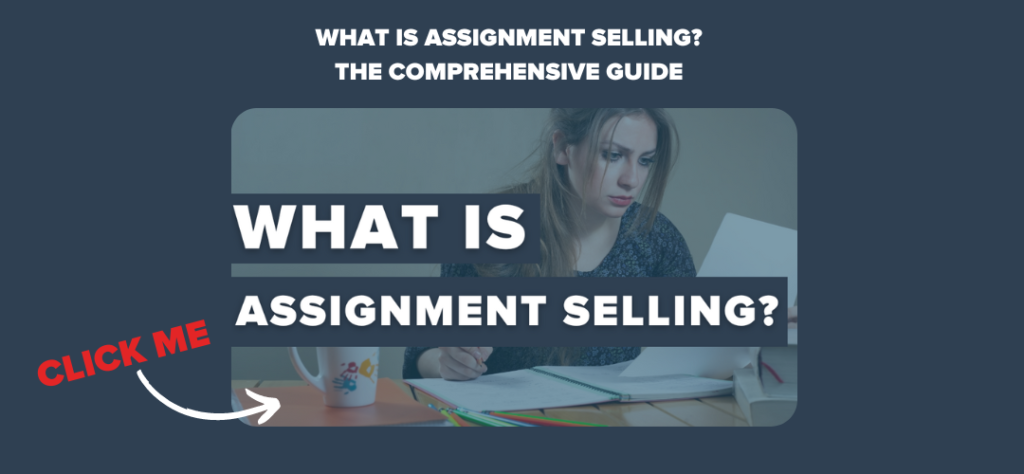You’re running ads. The leads are pouring in. But there’s a problem—they aren’t converting. Sound familiar? This is a common frustration for those who invest heavily in paid ads, only to see their sales team wasting time on leads that don’t go anywhere. Despite spending on ads, the quality of the leads just isn’t there, and it’s costing you money, time, and missed sales opportunities.
The good news? You can fix it.
Improving the quality of your leads doesn’t mean overhauling your entire ad strategy. Instead, with a few targeted adjustments, you can start bringing in higher-quality leads that are more likely to convert.
In this article, you’ll learn why your ads might be attracting the wrong leads and, more importantly, how to tweak your approach to bring in better ones.
Why Lead Quality Matters
When you’re running ads, it’s easy to get caught up in the excitement of seeing leads flood in.
But quantity doesn’t always mean quality, and bad lead quality can quietly drain your budget and time.
Poor-quality leads force your sales team to spend hours chasing prospects who aren’t interested, qualified, or ready to buy.
This means longer sales cycles and lower close rates, which ultimately takes a toll on your team’s productivity. Instead of focusing on high-potential leads, they’re wasting energy on leads that were never a good fit in the first place.
Read: How to Shorten Your Sales Cycle Using Assignment Selling

On the other side of the coin, bad lead quality means throwing money into a pit that doesn’t generate revenue.
Running ads isn’t cheap, and if the leads you’re generating aren’t converting into paying customers, it’s a direct hit to your return on investment (ROI).
You’re paying for clicks and sign-ups, but when those leads don’t result in sales, your cost per acquisition skyrockets. Essentially, you’re spending more money for less reward.
And this can feel like you’re just not getting anywhere.
On the flip side, focusing on lead quality over quantity means you’re nurturing relationships with prospects who are genuinely interested in what you offer.
These leads are more likely to convert, stay loyal, and even recommend your business to others. In the long run, this approach boosts your revenue and creates a more sustainable marketing and sales funnel.
Why Is My Lead Quality Bad?
If your ads are driving traffic but the leads you’re getting aren’t converting, it’s important to pinpoint why. Several factors could be contributing to the poor quality of your leads.
Here are the most common culprits:
1. Mismatched Audience Targeting
One of the biggest reasons for bad lead quality is targeting the wrong audience. Your ads might be reaching people who don’t fit your ideal customer profile.
Even if your click-through rates are high, those leads may not have the budget, interest, or authority to move forward in the sales process.
It’s essential to refine your audience targeting, ensuring you’re reaching decision-makers who need and want what you’re offering.
2. Poor Lead Qualification Processes
Even if your targeting is on point, a weak lead qualification process can still allow unqualified prospects to slip through.
If your marketing and sales teams aren’t aligned on what defines a qualified lead, you’ll end up with contacts who don’t meet the criteria for your product or service.
Without a solid lead scoring system in place, your sales team might be wasting time following up with leads that aren’t ready to buy or don’t have the authority to make purchasing decisions.
Read: How To Set Up Hubspot Lead Scoring To Improve Sales Efficiency
3. Misaligned Messaging and Content
Another key issue is a disconnect between your ad messaging and what you deliver post-click. If your ads promise something vague or unrelated to the actual product or service, you’ll attract the wrong people.
For example, ads that emphasise low prices or quick wins may bring in cost-conscious leads, but if your offering requires a more thoughtful investment, those leads won’t convert.
Ensuring your ad messaging is clear, specific, and aligned with your actual landing page offer can help attract higher-quality leads.
4. Inconsistent Alignment Between Sales and Marketing
When sales and marketing teams aren’t on the same page, it can lead to confusion and frustration.
If marketing is focused solely on generating volume without considering lead quality, they’ll pass unqualified leads to sales. This results in wasted follow-up efforts and missed opportunities to nurture higher-quality prospects.
A lack of communication between these teams can also lead to missed signals about what truly makes a lead “sales-ready.”
That’s where aligning sales and marketing via a Revenue Team comes into play.
Read: What is a revenue team and why is it important?
How to Improve Bad Lead Quality
1. Getting Your Offer Right
The first step is getting your offer right. To do this, it’s as simple as writing out your audience’s problems in their words and then rewriting the problems in solution orientated language.
Here’s an example:
- Problem Statement: “I don’t have any time to write blog articles in my business”
- Solution Statement: “How to write blog articles 10x faster for your business”
The first thing to take note of is that you should be writing the problem in the customer’s words, as if they are saying it. The second thing to take note of is that when you write the solution statement, you want to put “how to” in front of the problem statement, and that becomes your solution statement.
You then want to make sure that your offer is using this language. One reason your lead quality might be poor is because you’re targeting the wrong problem, or because you aren’t clearly targeting one problem.
So revisit your offer and think about the problem you’re actually pinpointing.
2. Optimising Your Creative
Your creative (which could be a video or image) needs to clearly showcase the problem you’re targeting.
The thing is a good lead is only as good as the relevance of the problem that they have to your business.
In other words, the better your creative is at showcasing that problem, the better it will be at attracting the right people.
But how do you act on this?
You want to first list the emotions that the buyer would feel based on their problem. Taking our example from earlier, we’re looking at the problem of “I don’t have any time to write blog articles in my business.”
For this problem, buyers might feel frustrated.
So, we need to have an image that showcases this frustration and evokes that emotion while also demonstrating the problem of not having time to write blog articles.
There are so many ways to show this emotion and problem. The key is pinpointing the problem and the resulting emotions, and then try to show those and evoke those through your creative.
When you start to think from this perspective, the way you approach creative completely changes.
If you’re not doing this, then you might be attracting people who are interested but who might not have that specific problem or emotion you’re targeting. When you get specific about the problem and the emotion, more of the people who truly resonate with that will click on the ad, which translates to higher lead quality.
3. Copy Must be Laser Focused
Just like the creative, you want to make sure you’re hitting this problem and emotion in your copy. There are a few questions you’ll want to ask about your copy to determine whether this needs to be fixed to improve lead quality.
Some of these questions include:
- Does my copy make the problem we’re solving very clear so that even a child would understand?
- Does my copy make the solution we’re providing very clear so that even a child would understand?
- Does my copy make readers think “They guessed exactly how I was feeling / what I was thinking”?
If the answer to those three questions is yes, then you’re on the right track. However, if it’s a no to any one of them, you might need to refine your copy to better attract the right audience.
4. Audience Targeting

If you’re not bringing in high quality leads, it might be because you’re targeting the wrong audience altogether. Here are three things you can do to get your audience targeting right:
- Update your buyer personas to reflect your ideal customers—are they decision-makers, researchers, or end-users?
- Revisit demographics and ensure you’re targeting the correct location, age and gender. It’s too easy to make the mistake of hitting an irrelevant location (if you’re a local business) or targeting an age group that just isn’t likely to invest in your product or service
- If it’s not working, go broad (more so for Meta Ads). At the end of the day, ad creative is king. This means that if you target a broad audience that meets your location, age and gender specifications, the ad platform will find the right audience for your offer because your creative is good enough at attracting the right type of audience
If you’ve got everything else right, then this approach should ensure you get higher lead quality.
5. Optimise Your Lead Qualification Process
Without a strong process to qualify leads before they even become a lead, you might attract people who are interested but who:
- Don’t have the budget
- Aren’t in the right mindset to purchase
- Aren’t actually invested in making a change but are intrigued by the topic you’re talking about
There’s a few things you can do to optimise your lead qualification process, including:
- Implementing lead scoring to rank prospects based on key factors such as interest, engagement level, and decision-making power
- Establishing clear qualification criteria based on buyer intent signals—like downloading content or engaging multiple times
- Using lead forms strategically by asking qualifying questions such as budget range or decision-making authority early in the funnel
- Ensuring a seamless handoff from marketing to sales through an agreed-upon process will also help reduce the chances of unqualified leads taking up valuable time
6. Content Alignment
There’s two areas where you need to align content:
- Between your landing page and your ad
- Between your marketing and sales teams
Between Your Landing Page and Your Ad
If your ad message is different from your landing page message, you might get low quality leads.
Here’s an example of how misalignment can cause an issue:
- User sees an ad, and the problem resonates with them and they want to find out more about the solution
- Upon landing on the page, the landing page discusses another problem or solution than what they saw in the ad, but they still enter their details because the original ad was strong
- But if the original ad doesn’t accurately reflect the problem you’re trying to solve, you’ve now got someone in your list who has a problem that you don’t solve, which by default makes them an unqualified lead
Now it might not always play out like this, but the point is that it can, so you should make sure content on your ad is aligned with the message on your landing page. Keep it consistent.
Between Your Marketing & Sales Teams
Sales and marketing must work hand-in-hand to maintain lead quality. Regular communication between the two teams ensures that marketing knows exactly what sales considers a qualified lead.
Sales should also provide feedback on leads that are passed over so that marketing can continually improve targeting and messaging. By working together, both teams can create a more effective funnel that prioritises quality over quantity.
Improving lead quality is not just a marketing task—sales and marketing must be aligned. Strengthen their collaboration by:
- Holding regular meetings between sales and marketing teams to review lead quality, share feedback, and make necessary adjustments
- Sharing feedback from sales about unqualified leads so that marketing can fine-tune targeting and messaging
- Establishing a feedback loop where sales informs marketing of key pain points or frequently asked questions that could improve future campaigns
So, What’s Next?
If you’re tired of wasting time on low-quality leads that don’t convert, now is the time to act.
Remember there’s six steps to optimise your lead quality:
- Getting Your Offer Right
- Optimising Your Creative
- Copy Must be Laser Focused
- Audience Targeting
- Lead Qualification Process
- Content Alignment
Next, you’re going to want to learn about the ad audit framework which can help you measure the effectiveness of your ads.
Read: Use the 5-Point Ad Framework to Drastically Increase Leads From Your Paid Ads














